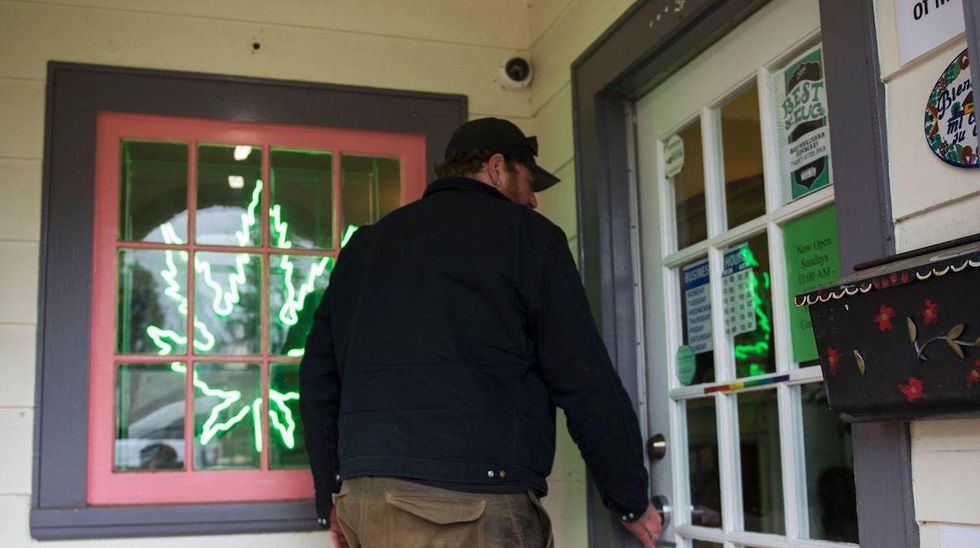
Medical cannabis has become more difficult for patients to get since the state of Oregon legalized recreational marijuana. (Andrew Caballero-Reynolds/Getty Images)

Oregon patients who use medicinal cannabis are finding it more and more difficult to get their prescriptions.
Rapidly changing laws have drastically led to a reduction in the number of dispensaries available for medical cardholders. Two years ago, there were 420 state medical dispensaries, but now there are only eight, The Guardian reported.
In 2014, Oregon legalized marijuana for recreational use, which prompted many medical businesses to shift to the recreational side in hopes of making big bucks. The law went into effect in July 2015.
Since the Oregon Liquor Control Commission took control of the recreational industry in 2015, nine bills have passed that expanded consumer access. At the same time, regulatory procedures for growing, processing, and packaging have changed.
The changes have created a big industry for recreational cannabis, but the medical program has nearly disappeared.
While recreational dispensaries can sell both products and many do, growers and processors who don't hold an OLCC license aren't allowed to sell their products in a recreational dispensary. The OLCC has issued nearly 2,000 licenses since recreational marijuana was legalized and it's no longer accepting new applicants.
Some areas have opted out of recreational sales, adding another challenge for patients.
“For those patients that would need their medicine in an area that’s opted out of recreational sales, and they don’t have a grower or they’re not growing on their own, it does present a real access issue for those individuals,” André Ourso told The Guardian. Ourso is an administrator for the Center for Health Protection at the Oregon Health Authority.
Limits on THC levels pose another problem for sick patients, according to Erich Berkovitz, who owns PharmEx and also uses medical cannabis for pain triggered by tics caused by Tourette syndrome.
For instance, edibles are capped at 100 mg THC, which he said isn't enough for a really sick person.
“If you need two 3,000 mg a day orally and you’re capped at a 100 mg candy bar, that means you need 20 candy bars, which cost $20 a pop,” Berkovitz told The Guardian. “So you’re spending $400 a day to eat 20 candy bars.”
Berkovitz said the dispensaries never worked for high-dose patients, even in the medical program.
Berkovitz said networks between medical patients, growers, and processors work best for patients.
“What worked was people who grew their own and were able to legally process it themselves, or go to a processor who did it at a reasonable rate,” he said.
“All the people that we made these laws for – the ones who are desperately ill – are being screwed right now and are directed to the black market,” said Karla Kay, PharmEx chief of operations.
Now, as of July 1, medical growers who produce plants for three or more patients are required by the OLCC to track their marijuana from seed to sale.
“The only way the patients are going to have large, high doses of medicine is if we revive the patient-grower networks," Berkovitz said. "They need to communicate with each other. No one’s going to get rich, but everybody involved will get clean medicine from the people they trust at a more affordable rate.”